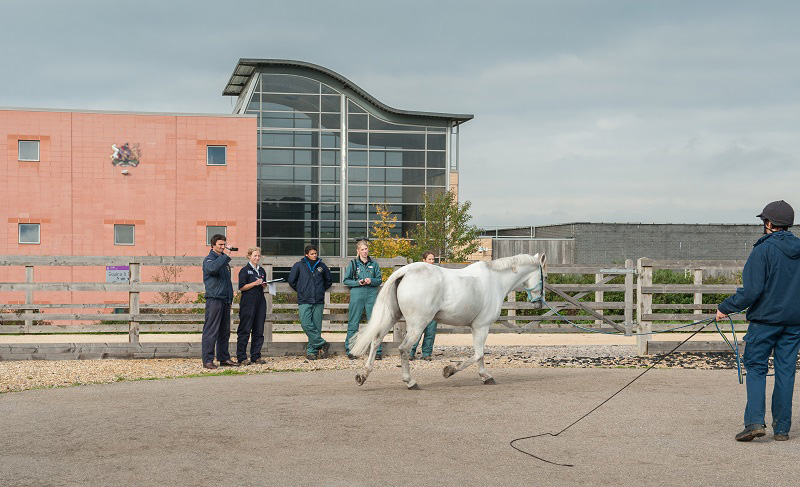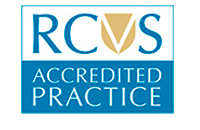24 hour contact: 01707 666297
Should we redefine equine lameness in the era of quantitative gait analysis?
An international team of researchers, including from The Royal Veterinary College (RVC) in London, have strongly advised on the need to discriminate clearly between “asymmetry” and “lameness” when assessing a horse’s gait.
It is important, they say, not to use these as interchangeable terms when interpreting gait analysis data – to do so risks implying that a horse is unfit to perform, and raises welfare issues.
This advice, published in the Equine Veterinary Journal, comes as gait analysis is becoming more technologically advanced, which increases the level of detail and accuracy of the diagnosis.
Horses have long been categorised, with respect to the functional status of their locomotor system, as those considered sound and those considered lame. However, the advent of computer technology has enabled the detailed study and quantification of the horse’s gait. This in turn has resulted in more of a sliding scale, meaning that just because a horse is not completely sound, it does not mean that it is lame and therefore unfit to perform.

The use of the term “lameness” in relation to subtle gait alterations and asymmetry is questionable in a scientific sense, and may be dangerous in the more societal context due to the negative connotation of the word lameness and its association with impairment of welfare and unfitness to compete.
The researchers argue that there is a strong need to better investigate the background and true meaning of these subtle gait alterations and to put them in the largely unknown context of normal variation, as well as to determine their true effect on equine welfare.
In particular, the researchers ask:
- Should we qualify horses that do not comply with criteria for optimal gait during a comprehensive and critical clinical lameness exam or that fall outside the threshold values set for the automated gait analysis systems as lame?
- With respect to the clinical assessment, to what extent are we looking for horses with an optimal gait, rather than for those with a clinically acceptable gait?
With these points in mind, describing a horse’s gait as asymmetrical is more suitable than labelling a horse as lame. This description of asymmetry means that a horse may not have a perfect gait, but by the same token, it is still fit to perform and is not lame. This description is both more accurate and more nuanced in terms of its welfare implications, and the ability of horses to continue in their disciplines.
The researchers state that as automated gait analysis comes increasingly to the fore of veterinary practice, it is important to sharply define the use of terminology in order to avoid confusion and to prevent the formation of wrong perceptions, either amongst professionals or by the lay public. Using the term “lame” for any horse falling beyond thresholds set for quantitative gait analysis or not showing the ideal motion pattern when assessed clinically does not seem a wise thing to do. The term “lame” should instead be reserved for horses deemed unfit to compete based on a comprehensive assessment of the animal that includes, but does not rely entirely on, the appreciation of the degree of gait asymmetry.

Dr.-Ing Thilo Pfau, Senior Lecturer in Bio-Engineering at the RVC, said: “Our advice is to implement evidence-based decision making combining the assessment of a skilled veterinary expert with quantification of gait parameters through advanced technological aids. This approach is followed at the RVC where a thorough lameness investigation includes in-hand and lunge exercise, assessment under the rider, and the horse’s gait is quantified with state-of-the-art multi-sensor technology. The newest development is to combine this with a camera based assessment of back movement in horses with poor performance syndrome offering a unique, comprehensive service through our expert veterinarians aided by cutting edge technology.”
Press Office Contact
Uche Graves / Zoe Chadwick
T: 0800 368 9520
E: uche.graves@plmr.co.uk / zoe.chadwick@plmr.co.uk
Notes to Editors
The Royal Veterinary College (RVC) is the UK's largest and longest established independent veterinary school and is a constituent College of the University of London. The RVC offers undergraduate, postgraduate and CPD programmes in veterinary medicine, veterinary nursing and biological sciences, being ranked in the top 10 universities nationally for biosciences degrees. It is currently the only veterinary school in the world to hold full accreditation from AVMA, EAEVE, RCVS and AVBC.
A research-led institution, in the most recent Research Excellence Framework (REF2014) the RVC maintained its position as the top HEFCE funded veterinary focused research institution.
The RVC also provides animal owners and the veterinary profession with access to expert veterinary care and advice through its teaching hospitals; the Beaumont Sainsbury Animal Hospital in central London, the Queen Mother Hospital for Animals (Europe's largest small animal referral centre), the Equine Referral Hospital, and the Farm Animal Clinical Centre located at the Hertfordshire campus.
RVC Press Release 5 September 2017
See other Press Releases.

